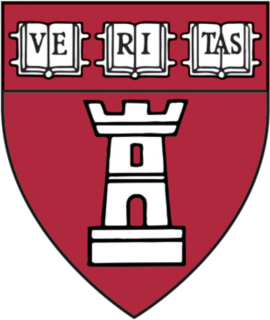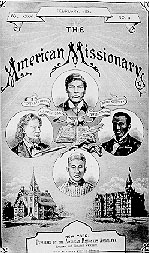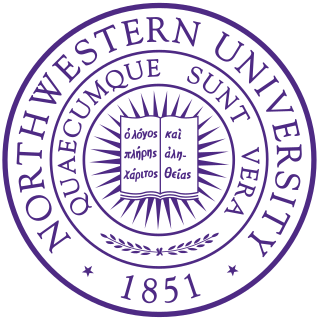Osteopathic medicine is a branch of the medical profession in the United States that promotes the practice of allopathic medicine with a set of philosophy and principles set by its earlier form, osteopathy. Osteopathic physicians (DOs) are licensed to practice medicine and surgery in all 50 US states. Only graduates of American osteopathic medical colleges may practice the full scope of medicine and surgery generally considered to be medicine by the general public; US DO graduates have historically applied for medical licensure in 87 countries outside of the United States, 85 of which provided them with the full scope of medical and surgical practice. The field is distinct from osteopathic practices offered in nations outside of the U.S., whose practitioners are generally not considered part of core medical staff nor of medicine itself. The other major branch of medicine in the United States is referred to by practitioners of osteopathic medicine as allopathic medicine.
The Rockefeller Foundation is an American private foundation based at 420 Fifth Avenue, New York City. It was established by the Rockefeller family in New York State on May 14, 1913, when its charter was formally accepted by the New York State Legislature. The foundation was started by Standard Oil co-founder John D. Rockefeller ("Senior"), along with his son John D. Rockefeller Jr. ("Junior"), and Senior's principal business and philanthropic advisor, Frederick Taylor Gates.

The American Medical Association (AMA) is a professional association and lobbying group of physicians and medical students. Founded in 1847, it is headquartered in Chicago, Illinois. Membership was approximately 240,000 in 2016.
The Association of American Medical Colleges (AAMC) is a nonprofit organization based in Washington, D.C. that was established in 1876. It represents medical schools, teaching hospitals, and academic and scientific societies, while providing services to its member institutions that include data from medical, education, and health studies, as well as consulting. The AAMC administers the Medical College Admission Test and operates the American Medical College Application Service and the Electronic Residency Application Service. Along with the American Medical Association, the AAMC co-sponsors the Liaison Committee on Medical Education, the accrediting body for all U.S. MD-granting medical education programs.

The Harvard School of Dental Medicine (HSDM) is the dental school of Harvard University. It is located in the Longwood Medical Area in Boston, Massachusetts. In addition to the DMD degree, HSDM offers specialty training programs, advanced training programs, and a PhD program through the Harvard Graduate School of Arts and Sciences. The program considers dentistry a specialty of medicine. Therefore, all students at HSDM experience dual citizenship between Harvard School of Dental Medicine and Harvard Medical School. Today, HSDM is the smallest school at Harvard University with a total student body of 280.

The American Missionary Association (AMA) was a Protestant-based abolitionist group founded on September 3, 1846, in Albany, New York. The main purpose of the organization was abolition of slavery, education of African Americans, promotion of racial equality, and spreading Christian values. Its members and leaders were of both races; The Association was chiefly sponsored by the Congregationalist churches in New England. Starting in 1861, it opened camps in the South for former slaves. It played a major role during the Reconstruction Era in promoting education for blacks in the South by establishing numerous schools and colleges, as well as paying for teachers.

Herman Johannes was an Indonesian professor, scientist, politician and National Hero. Johannes was the rector of Universitas Gadjah Mada in Yogyakarta (1961–1966), Coordinator for Higher Education from 1966 to 1979, a member of Indonesia's Presidential Supreme Advisory Council from 1968 to 1978, and the Minister for Public Works and Energy (1950–1951). He was also a member of the Executive Board of UNESCO from 1954 to 1957.
Established in 1933, the American Board of Medical Specialties (ABMS) is a non-profit organization which represent 24 broad areas of specialty medicine. ABMS is the largest physician-led specialty certification organization in the United States.

Northwestern University Feinberg School of Medicine is the medical school of Northwestern University and is located in the Streeterville neighborhood of Chicago, Illinois. Founded in 1859, Feinberg offers a full-time Doctor of Medicine degree program, multiple joint degree programs, graduate medical education, and continuing medical education.
Matthew Lyle Spencer was an American minister, writer and professor. He was the president of the University of Washington and later served as the Dean of the School of Journalism at Syracuse University.

The State University of New York Upstate Medical University is a public medical school in Syracuse, New York. Founded in 1834, Upstate is the 15th oldest medical school in the United States and is the only medical school in Central New York. The school is an upper-division transfer and doctoral university with degree-granting programs in the Norton College of Medicine, College of Nursing, College of Health Professions, and the College of Graduate Studies. The university is part of the State University of New York (SUNY) system.
The American Council on Education (ACE) is a nonprofit 501(c)(3) U.S. higher education association established in 1918. ACE's members are the leaders of approximately 1,700 accredited, degree-granting colleges and universities and higher education-related associations, organizations, and corporations. The organization, located in Washington, DC, conducts public policy advocacy, research, and other initiatives related to key higher education issues and offers leadership development programs to its members and others in the higher education community.
Medical school in the United States is a graduate program with the purpose of educating physicians in the field of medicine. Such schools provide a major part of the medical education in the United States. Most medical schools in the US confer upon graduates a Doctor of Medicine (MD) degree, while some confer a Doctor of Osteopathic Medicine (DO) degree. Most schools follow a similar pattern of education, with two years of classroom and laboratory based education, followed by two years of clinical rotations in a teaching hospital where students see patients in a variety of specialties. After completion, graduates must complete a residency before becoming licensed to practice medicine.

Peter William Dykema was an important force in the growth of the National Association for Music Education, Phi Mu Alpha Sinfonia fraternity, and the music education profession. Dykema was also active in the Music Teachers National Association and the National Education Association Department of Music Education. He also served as 1924-25 chairman of the Kiwanis International Committee on Music. Through these various avenues of involvement, in addition to his work as a composer, author, and educator, he was one of the leading music advocates of his day.

The New York Foundation is a charitable foundation which gives grants to non-profit organizations supporting community organizing and advocacy in New York City.
Claude E. Welch was an internationally recognized surgeon whose career spanned forty years. For most of those forty years, Welch worked at Massachusetts General Hospital. He was involved with a variety of activities that included "patient care, teaching, clinical research, establishment of funds to maintain such activities, promotion of all aspects of medical education, and strengthening of ties between the government, the courts, the legal profession and physicians."
Samuel Warren Hamilton, M.D. (1898-1951) was an American physician and psychiatrist who was an expert in the organization of mental hospitals.

Joseph Nathaniel McCormack was an American surgeon, a leader in several national medical organizations and a member of the Kentucky General Assembly. He served as executive officer of the Kentucky State Board of Health for thirty years and he led the reorganization of the American Medical Association (AMA) during its formative years of 1900 to 1911. James Burrow, historian of the AMA, has written that McCormack was "the most influential political leader of the profession in the Progressive Era, or perhaps in the AMA's entire history." McCormack served for six years as president of the Association of State and Territorial Health Officials and for two years as president of the Federation of State Medical Boards. In 1907 the American Association for the Advancement of Science included him in its list of the 100 most influential leaders in the fields of medicine, public health, science and social reform.
Ernest Edward Irons was an American physician who led several prominent medical organizations. Working as an intern under physician James B. Herrick, he identified abnormalities on a blood smear that resulted in the first published report of sickle cell disease.

Numa P. G. Adams was a dean at Howard University College of Medicine from 1929 until his death, in 1940. He was the first African American to hold the position of dean of the College of Medicine at Howard University.









